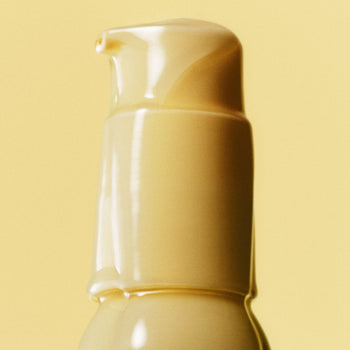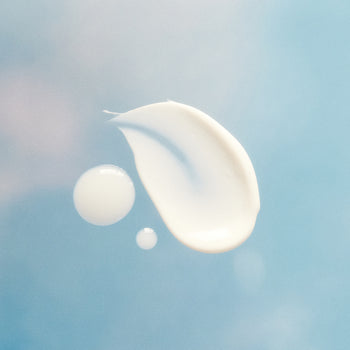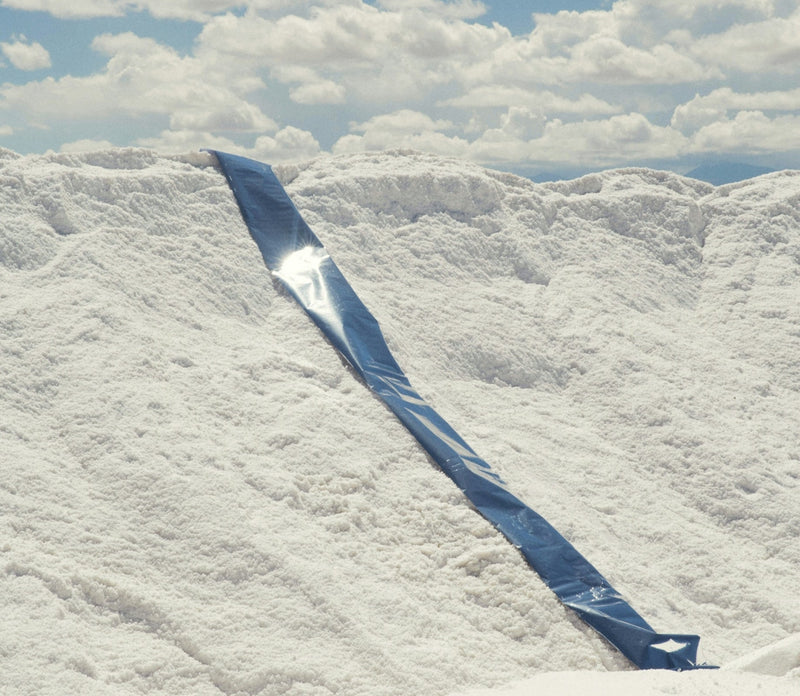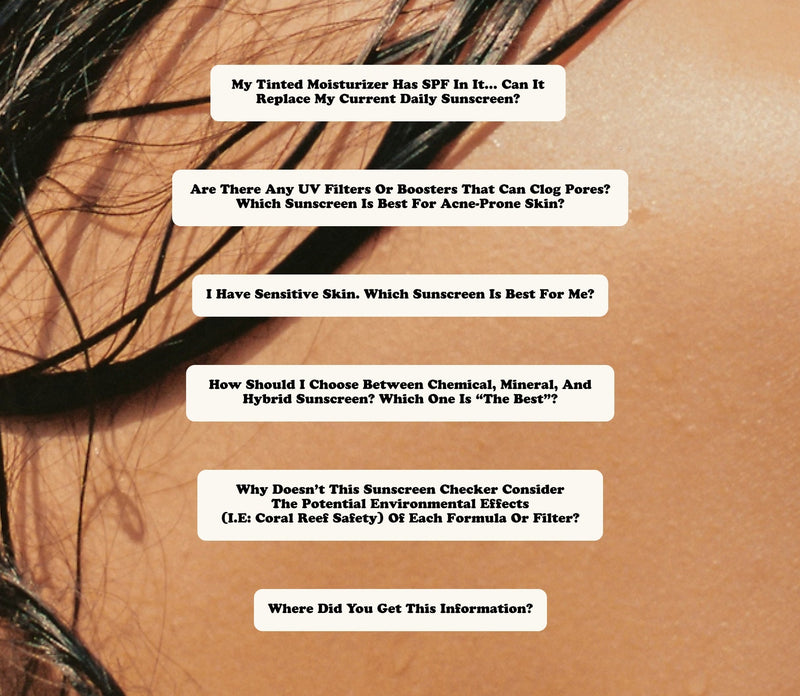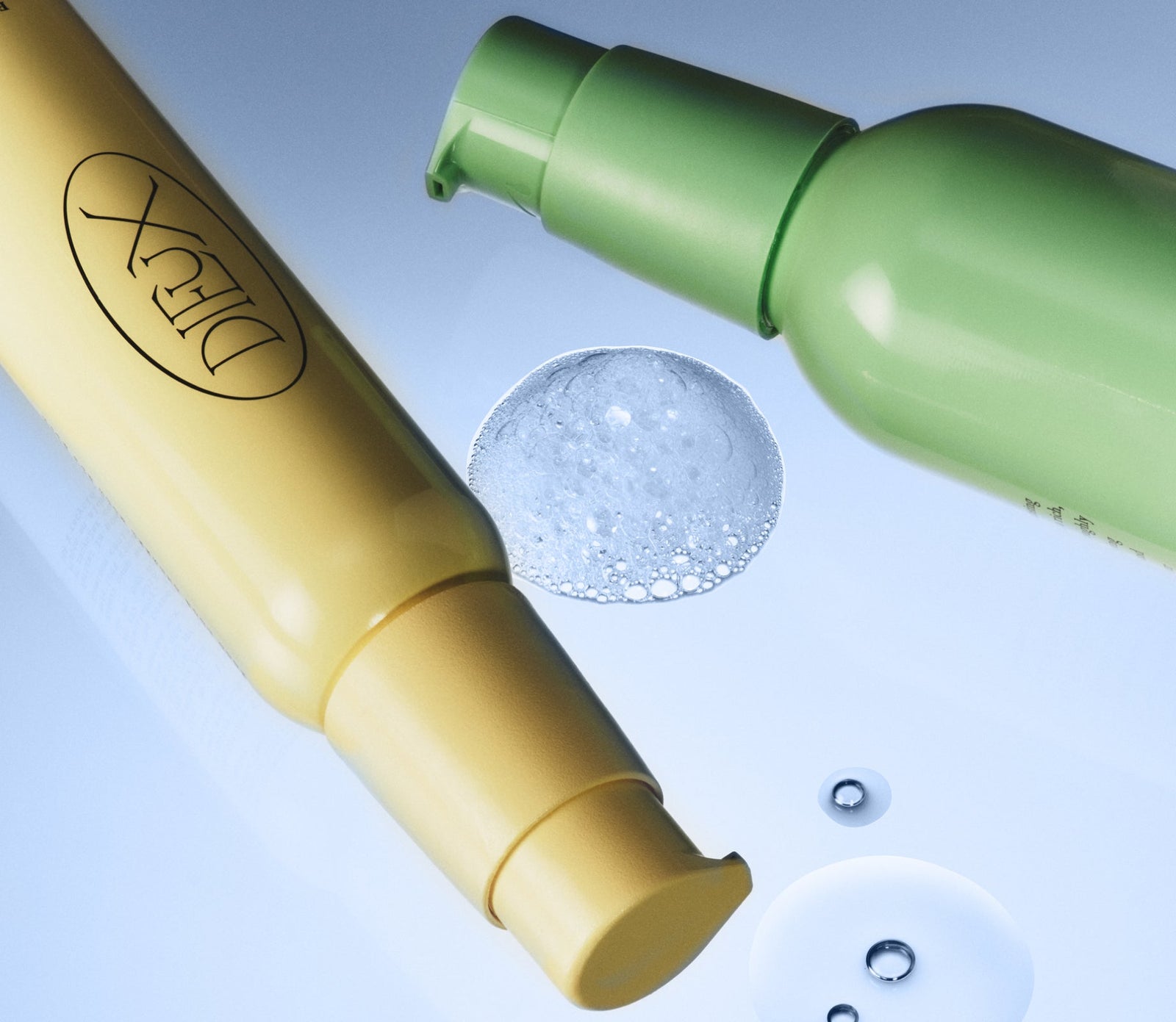
This is What Cleansers Are Made Of
Washing your face isn’t like washing your body–there’s a reason we don’t simply use soap on our faces. Different skin types and lifestyles need different kinds of ‘clean’, which can be achieved by using different types of cleansers, each with their own ingredient combinations.
So, how can we be better versed at reading and understanding cleanser labels when trying to find the right one for our skin? While many are marked “gentle” or “hydrating”, a cleanser’s effectiveness is determined by ingredient percentage. At Dieux, formula transparency is a top priority so that you can feel confident and informed when making skincare decisions. Let’s get into the world of cleanser formulas together.
What Are Cleansers Made Of?
Although all facial cleansers are different, most are made up of the same ~6 ingredient categories.
Surfactants
Beloved surfactants (we talk about these a lot) are multi-purpose cleansing agents. Short for ‘surface active agents’, surfactants clean away and emulsify ingredients in products (like oils and fats) and suspend impurities (like dirt), allowing them to be washed off the face.
The list of surfactant benefits in a formula is long and includes:
-
Emulsification - they blend immiscible liquids (like oil and water)
-
Foaming - many (not all) lather when rubbed with water
-
Deep cleaning - they cut through impurities on the skin
-
Solubilizing - they disperse formula ingredients evenly
-
Conditioning - some leave skin feeling soothed or softened
-
Thickening - they adjust the viscosity of emulsions
Examples of surfactants: sodium laureth sulfate, decyl glucoside, polysorbates
It’s important to note some types of surfactants can be drying and sensitizing to skin, and should be avoided when listed as the main ingredients in a facial cleanser. The most common of these is sodium lauryl sulfate, not to be confused with sodium laureth sulfate, which is not drying.
Solvents
Where surfactants “get at” oils and other impurities, solvents break them down. Solvents are liquid ingredients that dissolve other ingredients in a formula to form a solution. They ensure that a formula remains stable and intact (vs. separating out into ingredient layers) and enhance both texture and penetration ability. Overall, solvents are crucial for creating a formula’s desired texture and consistency.
Examples of solvents: water, isobutyl acetate, phenoxyethanol
Humectants & Emollients
What about all of the “non-stripping” language we hear about in the world of cleansers? These next ingredients draw in, and then retain, hydration in the skin, ensuring that the cleanse doesn’t damage the skin barrier.
Humectants draw water into the skin, hydrating and plumping it. They work by attracting moisture from deeper layers of the skin, or from the environment (like humid air), and can be responsible for making skin feel softer, more vibrant, and more resilient.
Examples of humectants: glycerin, urea, hyaluronic acid
Emollients take the delivered moisture and use it to fill in the gaps between skin cells, creating a smooth, consistent texture. By filling in the skin wall, emollients also help to prevent water loss (preventing dryness) and protect skin from environmental damage, improving barrier function overall.
Examples of emollients: oils, butters, lanolin, ceramides
Although humectants and emollients are in most cleansers, those specifically formulated for oily or acne-prone skin may not prioritize moisturizing, and instead include ingredients that target those specific skin concerns.
Preservatives, Chelators, and Antioxidants
Then there are the functional ingredients in most formulas that keep it safe and stable. Let’s break them down:
These ingredients prevent bacteria, yeast, and mold from growing and contaminating the formula. Preservatives ensure formulas remain safe and effective.
Examples of preservatives: phenoxyethanol, parabens
Chelators
These binding ingredients attach to metal ions and prevent them from causing any unwanted reactions in the formula. They’re hugely important for stability, color, and penetration ability of actives in the formula.
Examples of chelators: disodium EDTA, citric acid
Antioxidants
Protecting the skin from free radicals and oxidative damage, antioxidants are imperative for reducing signs of UV damage and pollution. They protect skin cells, and can enhance the effectiveness of other ingredients in the formula. In cleansers, they can help stabilize the formula or offer minor benefits for sensitive skin.
Examples of antioxidants: vitamin C, vitamin E, plant-derived antioxidants
Thickeners & Sensory Agents
But wait, there’s more to a formula than what it does—let’s talk about ingredients that inform how it feels. Thickeners increase the viscosity of cleansers, making them more stable and feel more silky and gel-like. Sensory agents also add to a more desirable feel on skin and can contribute to a non-sticky or greasy finish.
Examples of thickeners: xanthan gum, hydroxyethylcellulose
Examples of sensory agents: dimethicone, polyethylene glycol
Active Ingredients
The ingredients to watch out for in serums and moisturizers—actives are powerful ingredients that target and address specific skin goals, like reducing wrinkles, soothing irritation, or reducing blemishes.
It’s less common, but actives can also be found in cleanser formulas, where skin concerns are addressed beyond just cleansing.
At Dieux, we aim not to overload active ingredients in rinse-off formulas (actives are expensive, and we don’t want them going down the drain!). Adding actives to cleansing formulas is a delicate practice, and in our formulation process for Ethereal Cleansing Oil, we created a deeply effective cleanser without them. In Baptism Gel Cleanser, the one active you will find is 10% glycerin, which powerfully hydrates—leaving skin soft and supple after use.
Examples of active ingredients (in cleansers): salicylic acid, hyaluronic acid, glycolic acid
How Do You Choose A Cleanser?
Another great question. Our team has developed a graphic to help you confidently choose the right Dieux cleanser for your skin needs:

Basically, these questions are most important:
-
What are your main skin goals?
-
How much makeup/sunscreen do you regularly wear?
-
What’s your activity/sweat level?
-
How exposed to the elements are you?
-
Do you need it to be pore clarifying?
-
How long do you want your ritual to be?
Your responses will help you gather whether you’d benefit from an oil cleanser (like Ethereal), a water-based gel cleanser (like Baptism), or a double cleanse with both products. Unlike most oil cleansers, Ethereal is formulated to leave zero residue on the skin after use, making a double cleanse optional.
-
If you wear daily, waterproof makeup and sunscreen, or sweat often, it’s a good idea to oil cleanse.If you’re more likely to go light on makeup and are exposed to fewer impurities on the day to day, a water-based cleanser is probably for you. If you’re a combo of both, say you love a full-beat look but also want extra pore-clarifying benefits from your cleanser, you’d benefit from a double cleanse.
More Questions?
We’ve put together a few FAQs that might help round out the conversation.
What’s a “good” facial cleanser?
This is totally subjective and depends on your lifestyle choices (like makeup use and activity level). Both Dieux cleansers (Baptism Gel Cleanser and Ethereal Cleansing Oil) are formulated to work well for all skin types.
What ingredients should you avoid in face cleansers?
At Dieux, we’ll always focus on what’s in our formulations, not what they’re “free from.” That being said, there are some common drying agents that you may want to keep an eye out for, especially if you have dry skin or a damaged skin barrier. These include sulfates and high concentrations of drying alcohols such as alcohol denat., ethanol, and isopropyl alcohol.
Can I use face cleanser with actives like AHAs or retinol?
As it relates to these actives formulated within a cleanser, responses vary for each. AHAs are great options to put into cleansers—they’re water soluble (so ideal for a cleanser format), and since they work on the top layer of your skin, delivery is less of a challenge. Using AHAs in a rinse-off format can be a benefit as it’s a shorter amount of contact (meaning less irritation).
On the other hand, retinol in a cleanser is counterintuitive for a few reasons. Retinol is an extremely sensitive ingredient—it is unstable and photosensitive. It will degrade in the presence of UV light, water, and oxygen. Additionally, it is oil soluble (meaning it needs to be solubilized in an oil to work in a formula). Cleansers are usually water-based formulas (even some “oil” cleansers are water based), which isn’t necessarily the best medium for retinol or its derivatives. It takes time for retinol to be delivered to the skin, and a rinse-off product doesn’t give enough time for delivery, so you likely wouldn’t see results.
As it relates to using actives alongside a facial cleanser, the answer is yes, always! Washing your face is a must, no matter what active ingredients you use in the rest of your skin routine. However, if using potentially-irritating actives like AHAs or retinol, it’s important to select a cleanser that’s gentle on the skin barrier, like Baptism or Ethereal.
Do I wash off an oil cleanser?
Oil cleansers should be rinsed and removed with water. Ethereal Cleansing Oil, for instance, is made with a Double Cleanse Emulsifier Complex, which is an emulsifying ingredient blend that rinses impurities away and reveals soft skin when water is added to the product and massaged onto the face.
